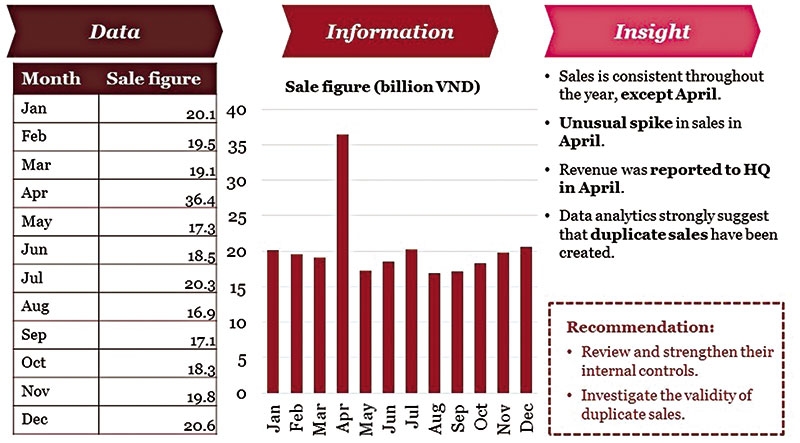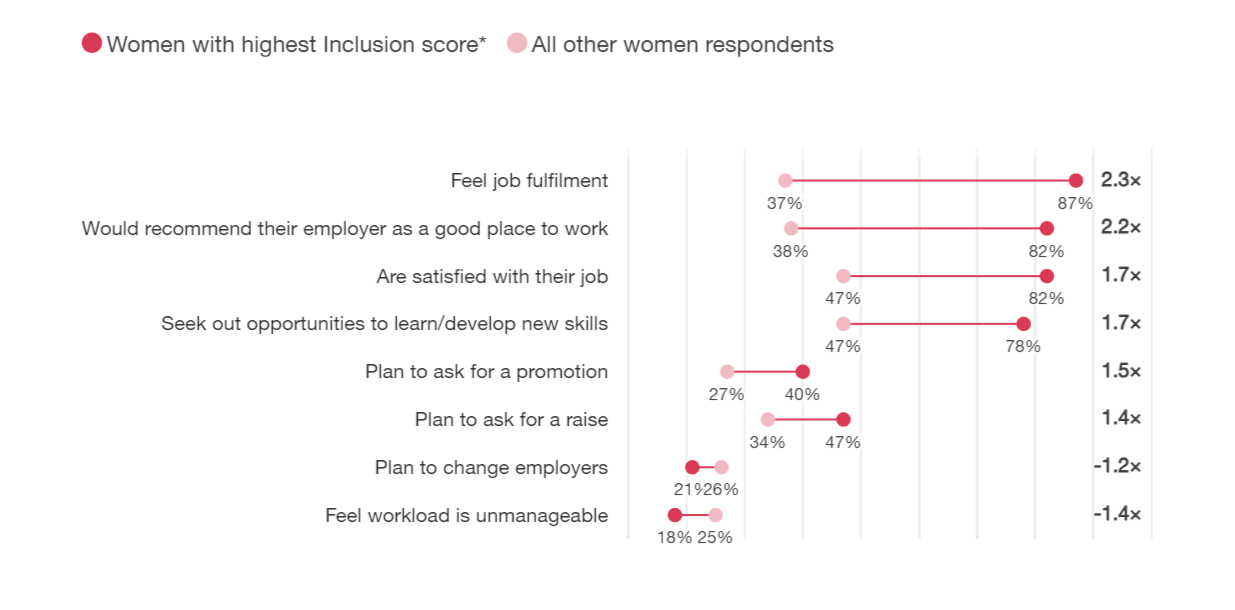Harnessing the power of data by visualisation
 |
In a previous article, we covered the way to unlock the power of data, in which businesses are required to focus on understanding what data needs to be developed or acquired in order to create a solid foundation and to drive data-based insights; creating transparent and reliable data by organising, integrating, and streamlining the data these businesses use; and applying a series of analytics and visualisation methodologies, algorithms, techniques, and tools to gain insights from the data. In this article, we will explore the concept of data visualisation and its benefits to businesses. We will also uncover the principles required for good data visualisation to extract actionable insights.
Gaining insight from data
Data alone is not insight. It merely refers to the facts or information about businesses and customers that takes the form of numbers, statistics, historical reviews, and more. It takes certain specific steps to transform data into information and to be able to pull out actionable insights from this data.
According to the Oxford Dictionary, insight is the capacity to gain an accurate and deep, intuitive understanding of a thing. Gaining market insight could be the catalyst for creating new value, both internally and externally; for helping businesses to optimise their data assets in order to save time and money; to find new revenue sources; or to capitalise on the untapped business intelligence the company already owns. Data visualisation is the presentation of data in a pictorial or graphical format to communicate information to users clearly and efficiently, via the information graphics selected. It is one of the most common approaches utilised to obtain valuable insights from the data at hand. In other words, data visualisation is the visual communication element of data analytics, which converts data to information and information to insight. As the human brain processing visual information quicker than words, good data visualisation could help business leaders make faster and more accurate decisions.
Let’s take an example from some sales data in the picture above. The sales volume is presented in the table, which is tedious to look at and difficult to draw any cohesive conclusions from. When converted into images, charts, and figures; the abnormality of the data is easily recognisable. The sales volume is consistent throughout all months of the year, except for the month of April. This strongly suggests that the decision makers should start to review the validity of the data, as well as strengthen their internal controls (see figure above).
 |
Principles for good data visualisation
Through visualisation, data is transformed from a flat and boring structure to become valuable information to be used by business leaders. A good interpretation of data could help decision makers recognise the patterns or trends which are not obvious in a flat structure.
To truly make use of data and bring competitive advantage to the business, data must be presented in a simple and understandable manner. It should enable even non-professionals to be able to comprehend and interpret the underlying message of the data. It’s like the genius theoretical physicist Albert Einstein once said: “If you can’t explain it simply, you don’t understand it well enough”. A good visualisation should include the following principles:
Plan for the expectations. Data visualisation should deliver a clear and meaningful message to its targeted audience. Objectives, context, and audience should be clearly identified prior to the data being visualised.
Preparation is the key. The underlying data should be evaluated, cleansed, and prepared for analysis. Necessary data should be identified and requested based on the objectives, context, and audience in order to enable accurate data analytics and to ensure the visualisation delivers a complete and comprehensive message.
Keep it simple. Data visualisation should be simple enough to enable non-professionals to understand the message conveyed. A good use of graphic charts, colour, size, position, and data-ink ratio (the non-erasable core of a graphic) eliminates distractions, clarifies the message of charts, and can help readers navigate complex figures and statistics.
Use headings and commentaries. Headings and commentaries should be used to support the visualisation, where applicable, to help readers quickly identify the key message of a graphic. Technical terms or jargon should not be over-used when communicating to the general audience.
Avoid dodgy visualisations. Data visualisation should deliver a true and fair message of the facts. Developing data visualisation should be based on a correct and common scale. Always include full data to avoid dodgy visualisation.
Choose the right tools. There is a vast range of tools and software available on the market, provided both by big corporations and startups. It is not an easy task for business leaders to choose appropriate tools for their businesses.
There are many aspects that need to be taken into consideration. To ensure the right decision is made, business owners should seek professional advice prior to implementing tools and software in order to reduce time and costs.
By Nguyen Thanh Hai Senior manager, IT risk assurance services, PwC Vietnam
What the stars mean:
★ Poor ★ ★ Promising ★★★ Good ★★★★ Very good ★★★★★ Exceptional
 Tag:
Tag:
Related Contents
Latest News
More News
- Vietnam's new tax regulations reflect global tax trends (December 08, 2023 | 17:41)
- Businesses becoming active in the circular economy (September 25, 2023 | 09:00)
- Salary gaps must be addressed through upskilling (July 06, 2023 | 09:16)
- Navigating challenges and embracing succession: Insights for Vietnamese family businesses (July 04, 2023 | 11:32)
- Family governance of utmost priority for business success (June 22, 2023 | 14:00)
- PwC: Family businesses in Vietnam need to transform to build trust (June 13, 2023 | 16:56)
- E-commerce competition: a story of past and future (May 30, 2023 | 11:28)
- Flexibility desired for infrastructure (May 18, 2023 | 11:19)
- Enhancing functionality in infrastructure (May 08, 2023 | 10:50)
- Asia-Pacific Capital Projects & Infrastructure Summit spotlights sustainability (April 28, 2023 | 10:30)


















 Mobile Version
Mobile Version